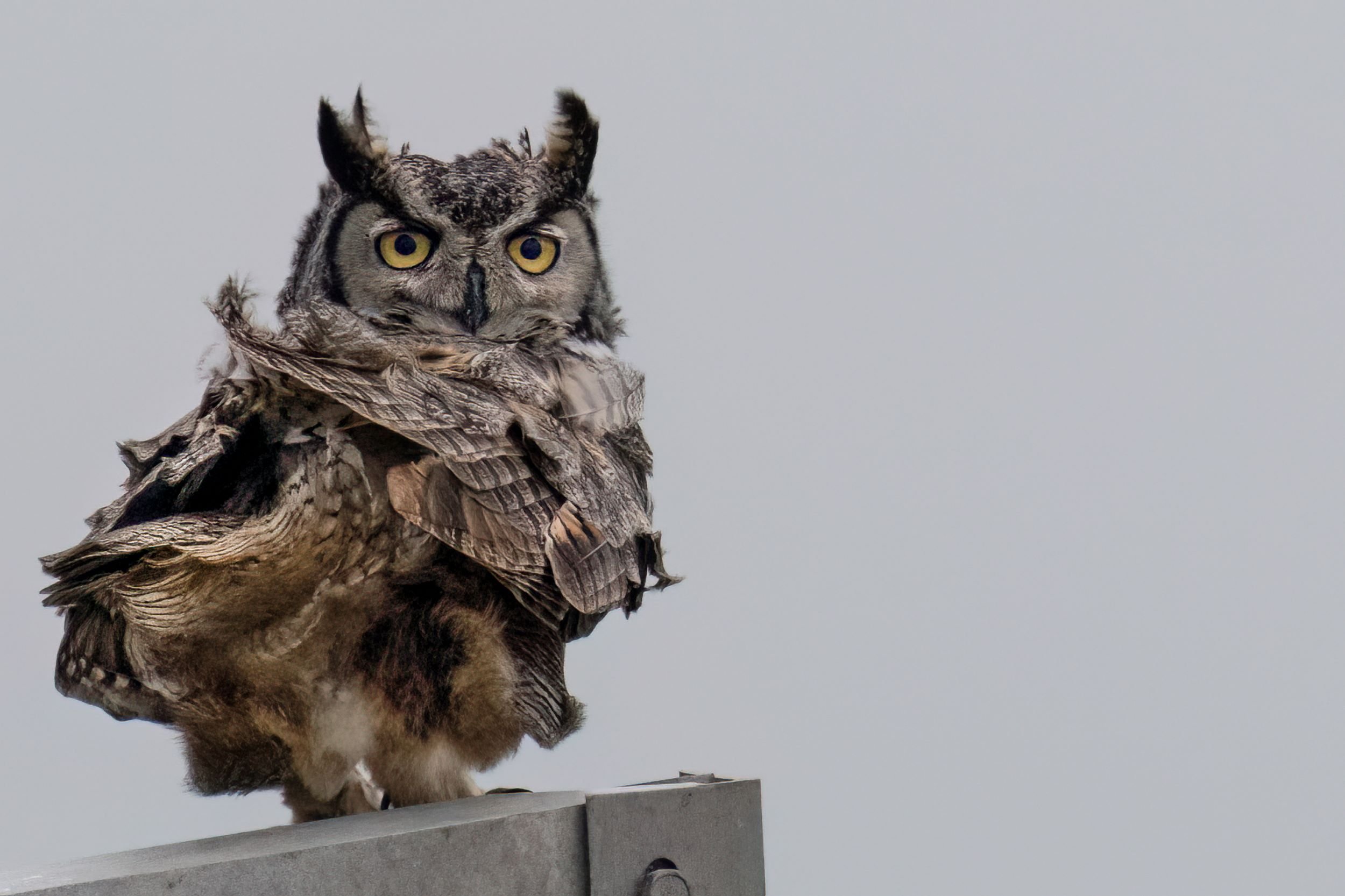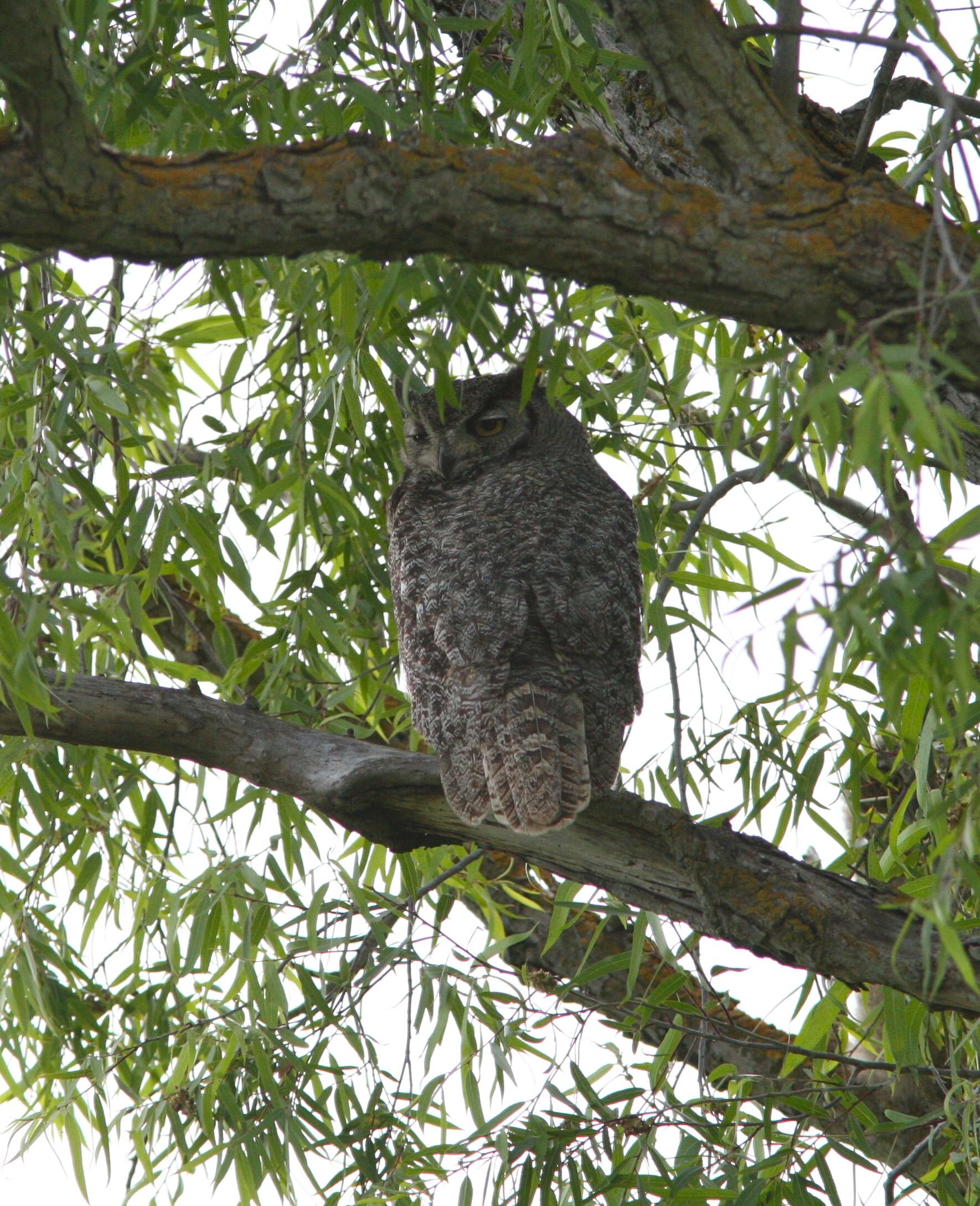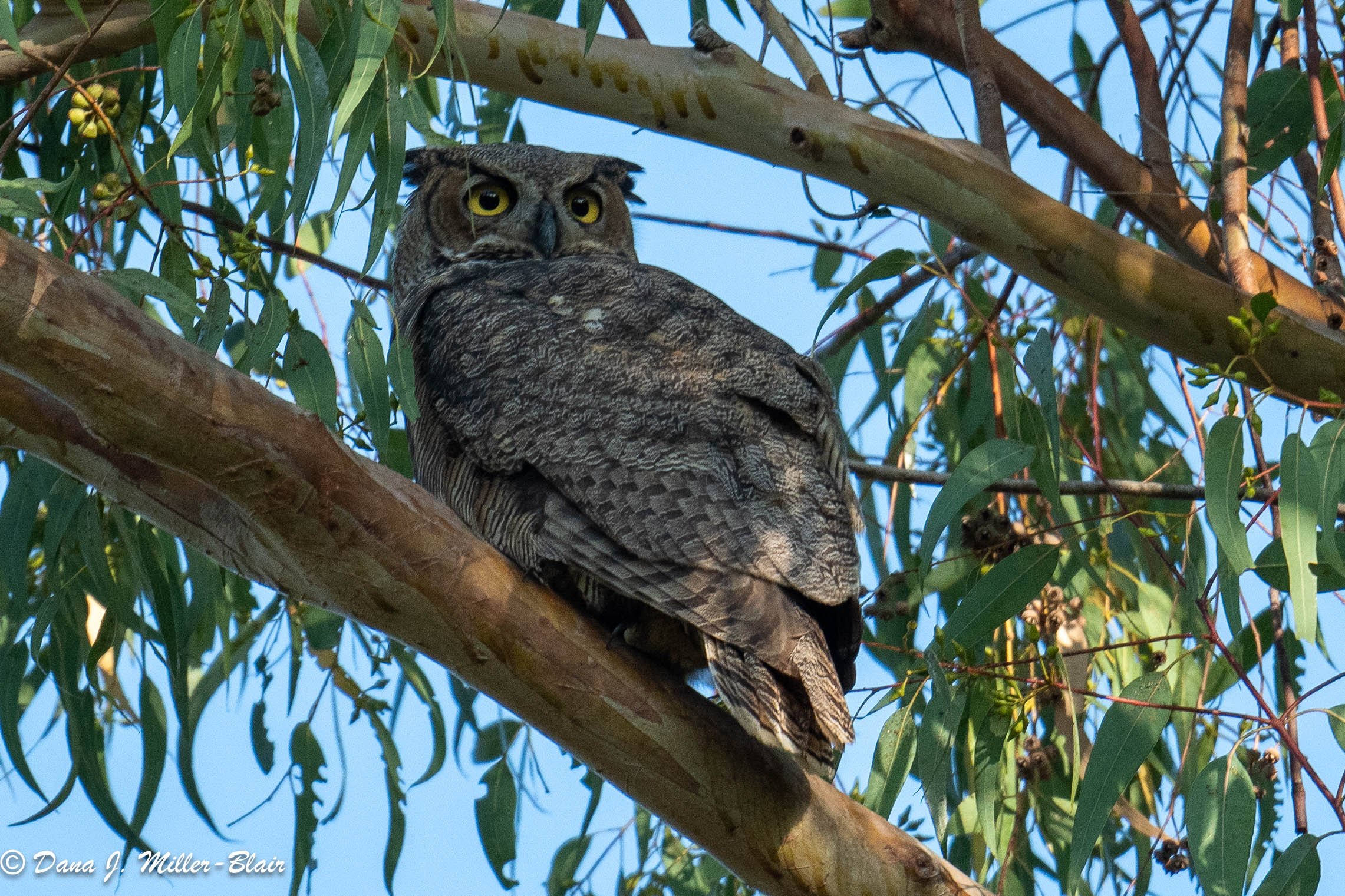Adult Great Horned Owl, Image by Daniel Lee Brown
This month let’s talk about the Great Horned Owl. Its name alone makes it clear that this is quite a special species! It has a huge range and is found all over North America and in some parts of South America as well. It’s even found in far northern regions if there are trees present. The Great Horned Owl is nocturnal (active at night); but is sometimes active in the late afternoon or early morning, especially when food supplies are low. Even though they are fairly large birds, their soft feathers and special wing structure makes them able to fly silently! Also, they can fly up to 40 mph! They have excellent night vision; but because their eyes don’t move in their sockets, Great Horned Owls must move their heads in order to look around. This is pretty easy for them because their necks can rotate 270 degrees!
What do Great Horned Owls look like?
Great Horned Owls have a barrel-shaped body, large yellow eyes, a large head, a fairly short tail, and short yet very wide wings. Depending on the region they live in, these owls have a few different color tones. Some are more whitish, some very dark, and some are a pale gray. This is thought to be because Great Horned Owls are non-migratory birds (remain in their area year-round). Their feathers can be orangish-brown, white, black, or gray. They have two high or peaked feather groupings on the top of their heads, which look like ears; but they are not! Their ear openings are further down on the sides of their heads. Like many owls, one ear is lower than the other. This ‘unusual’ ear placement actually improves their hearing and makes locating food extremely easy! A Great Horned Owl’s hearing is about ten times better than a human; and they can hear sounds up to ten miles away! Their talons (or claws at the end of their toes) are very powerful.
Adult Great Horned Owl, Dana J. Miller-Blair
Where do Great Horned Owls live?
They can be found in forests, river valleys, lake shores, agricultural areas, and sometimes in wooded suburban and urban areas, mostly around golf courses or parks. Great Horned Owls are very early nesters compared to most birds and start their nests in early winter. It has been said that these owls are a bit lazy when it comes to building their own nests. Usually, they simply reuse an old nest of a hawk or other large bird. They also nest in tree hollows (holes or cavities inside trees), caves, tree stumps, or abandoned structures. While the male does the hunting for food while the female sits on the eggs, both parents will feed the babies after they hatch. Baby Great Horned Owls are cared for and fed by their parents for several months. The parents stay fairly close to the area after the nesting season; but the young owls leave the area. The young owls fly far away in the Fall and find new areas to live in. A pair of nesting Great Horned Owls won't allow others to nest in their area.
Juvenile Great Horned Owl, Image by Jane Van Kessel
What do Great Horned Owls eat?
Great Horned Owls don't seem to be very picky about what they eat. They will eat many species; but their diet is mostly that of mammals. Great Horned Owls are one of the only predators of skunks! They have a terrible sense of smell; so they aren't bothered at all if a skunk should spray them. They also eat birds, amphibians, and reptiles.
When perched in trees, Great Horned Owls are usually well camouflaged (the ability to not be seen easily) and usually fly down to the ground to catch prey. They also may glide along the ground to look for food. Their short, wide wings also make it easy to fly in dense forests or in heavily planted landscapes; but hunting success increases when owls hunt in more open spaces.
Adult Great Horned Owl, Image by Craig Swolgaard
What do Great Horned Owls sound like?
Some people label the familiar hooting sound of the Great Horned Owl as a call. Most researchers now label the hooting sound as a song. Many people also confuse the daytime song of the Mourning Dove with that of the Great Horned Owl, which is heard at night. The song of the Mourning Dove is added below; so you can compare the two. Let’s listen now:
These songs and calls of the Great Horned Owl are from xeno-canto. More Great Horned Owl vocalizations can be found at xeno-canto.org/species/Bubo-virginianus.










